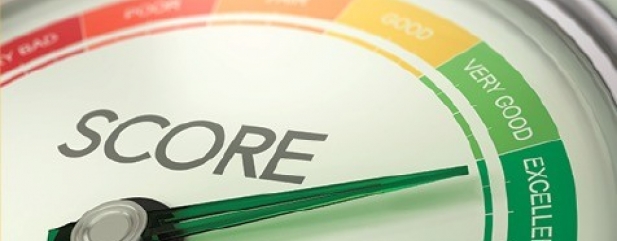Archived article
Please note that tax, investment, pension and ISA rules can change and the information and any views contained in this article may now be inaccurate.
More gloom for UK amid downgrade for country’s credit outlook

This week started on the back foot for investors who were digesting news that credit rating agency Moody’s had cut its outlook on the UK from ‘stable’ to ‘negative’, paving the way forward for a full downgrade of its current Aa2 rating.
Rating agencies, whose job it is to assess creditworthiness, give investors a steer about the future direction of any credit changes by denoting them as stable or negative.
Moody’s says: ‘The UK’s debt burden is high and unlikely to fall, given growing pressures for spending increases, with little clarity on how they might be financed. Brexit-related uncertainty has led to slower growth in business investment, which weighs on growth rates.’
The UK lost its Aaa rating for the first time in 35 years in February 2013 for similar concerns about slower economic growth and high and growing debt burdens.
Both the Conservative and Labour parties have talked up spending plans ahead of the general election on 12 December. Chancellor Sajid Javid refused to give precise numbers, but the Tories have pledged to end austerity after the election, promising to spend an extra £20bn a year on capital projects as well as £7bn for education and £34bn for the NHS.
The Conservative Party has claimed that Labour would spend an additional £1.2trn over a five-year term, basing its estimates on the 2017 manifesto and policies passed at the party conferences.
Paul Johnson, a director at the Institute for Fiscal Studies (IFS), says the gap between what the Government spends and what it receives is running higher than expected, and has resulted in UK borrowing rising by over 20% in the past six months.
He adds: ‘At some point it becomes unsustainable, you’ve got to stop it going up at some point especially when you know big spending pressures are coming down the road.’
Currently the fiscal rules mandate that state borrowing should remain below 2% of national income, but based on IFS projections, the deficit will be higher in each of the next five years exceeding £55bn this year and £50bn next, equating to over 2.5% of GDP.
Data released by the Office for National Statistics on Monday showed that the economy grew at its slowest annual rate since 2010, up just 1%. On a quarterly basis the economy grew by 0.3%, below economists’ forecasts of 0.4%, according to Reuters.
UNDERSTANDING THE RATINGS SCALE
Moody’s credit rating scale starts with Aaa at the top, categorised as ‘prime’. It then goes from Aa1 to Aa3 as ‘high grade’, followed by A1 to A3 as ‘upper medium grade’. The scale then moves to Baa1 to Baa3 as ‘lower medium grade’, before going through various ratings for ‘non-investment grade’ and ‘speculative’ before reaching ‘in default’ at the bottom.
Important information:
These articles are provided by Shares magazine which is published by AJ Bell Media, a part of AJ Bell. Shares is not written by AJ Bell.
Shares is provided for your general information and use and is not a personal recommendation to invest. It is not intended to be relied upon by you in making or not making any investment decisions. The investments referred to in these articles will not be suitable for all investors. If in doubt please seek appropriate independent financial advice.
Investors acting on the information in these articles do so at their own risk and AJ Bell Media and its staff do not accept liability for losses suffered by investors as a result of their investment decisions.

 magazine
magazine








